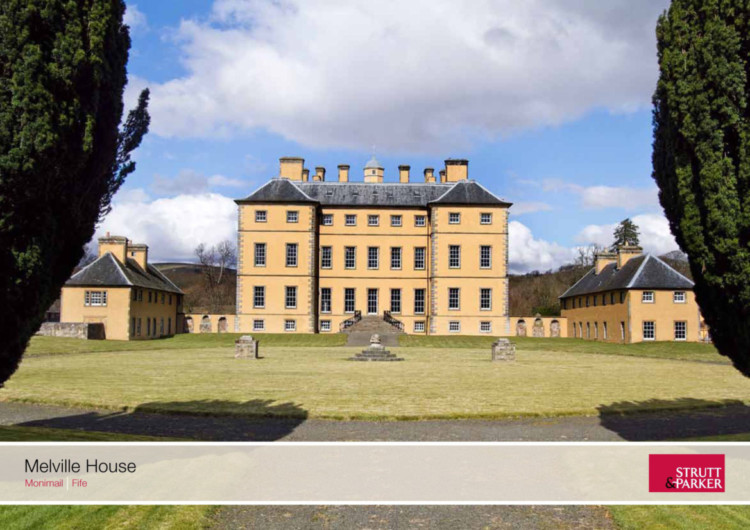
A bargain at just £1.6 million!
The lavish former home of a Scottish politician who helped William of Orange take the throne is on the market for a knockdown price of £1.6million.
Melville House, with its 17 bedrooms, eight reception rooms, and stunning architectural features throughout, was once described as the “grandest house in Scotland”.
It was built using the wealth accrued by protestant sympathiser George Melville, who became Secretary of State for Scotland through his loyalty to the king in the 17th Century Glorious Revolution.
But the pile endured a chequered history over the centuries. It was once valued at £4.5million but failed to find a buyer and became Britain’s most expensive repossession in 2005.
Now it is for sale once more complete with all furniture and fittings, and with even the billiard table thrown in at almost one-third of the original asking price.
The sales brochure for the property, which sits in 16 acres of land in Monimail, near Cupar, Fife, states that it is “thought to be Scotland’s finest example of a Palladian mansion”.
It adds: “The house has a wealth of stunning architectural features, including lavishly oak panelled rooms, panelled doors with pulvinated friezes, Ionic and Corinthian pilasters flanking marble fireplaces, intricately carved over mantels, astragal windows and hidden doors.”
The ground floor of the four-storey property comprises a library, reception hall, study, music room, dining room and kitchen, while the first floor boasts a magnificent oak-panelled great drawing room, three fine panelled reception rooms, billiard room and the master bedroom.
A further 10 bedrooms are upstairs, with a staff flat in the basement along with a catering kitchen, laundry room and wine cellar.
It also features two self-contained wings, each with its own set of additional bedrooms, kitchens and living areas, as well as a 19th-Century coach house and even a tree house.
The current owners bought the property in 2009 after it was repossessed by a South African bank from its previous residents.
Melville House was built for George Melville in 1697 by the Surveyor of Royal Works James Smith, who also helped build the Palace of Holyroodhouse and Drumlanrigg Castle.
After the Glorious Revolution of 1688, Melville played a prominent role in the Convention Parliament, which offered the Scottish throne to William.
As a reward for his loyalty to the new king he was appointed Secretary of State for Scotland in 1689, and a year later an earldom followed.
The Scottish aristocrat only lived in the house for a few years before he died, but it remained in the family until 1949 when it was sold, along with its contents, and converted into a private school.
During the Second World War it also spent time as a hospital and temporary barracks, having been requisitioned by the Army.

Enjoy the convenience of having The Sunday Post delivered as a digital ePaper straight to your smartphone, tablet or computer.
Subscribe for only £5.49 a month and enjoy all the benefits of the printed paper as a digital replica.
Subscribe